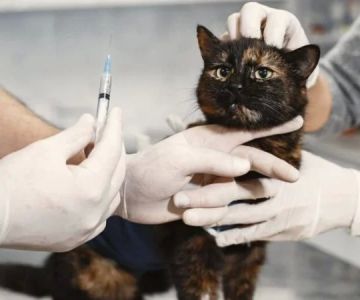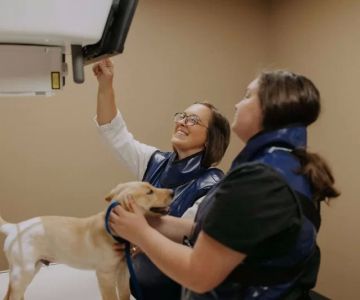How Math is Used in Being a Veterinarian: The Role of Mathematics in Veterinary Practice
- Daily Math in a Veterinarian's Life
- Key Calculations in Veterinary Medicine
- Mathematics for Animal Health and Treatment
- Real-Life Examples: How Veterinarians Use Math
- How to Learn Veterinary Math Skills
1. Daily Math in a Veterinarian's Life
As a veterinarian, math isn't just a subject learned in school—it's a crucial skill used daily in practice. From calculating the right drug dosage for a pet to determining the proper amount of anesthesia for surgery, veterinarians rely on math to make life-saving decisions. While it may not seem obvious, math is integral to ensuring that animals receive the correct treatments and care.
Veterinarians use mathematical concepts ranging from basic arithmetic to more complex calculations involving ratios and percentages. It’s not just about numbers; it's about making accurate assessments that directly affect an animal's well-being. Let’s take a deeper dive into some of the key areas where math is essential in veterinary practice.
2. Key Calculations in Veterinary Medicine
One of the most important uses of math in veterinary medicine is calculating the correct dosage of medications. This is often based on an animal's weight, and even slight errors can have serious consequences. For instance, veterinarians must calculate the right amount of antibiotics or pain medication for a dog, cat, or even an exotic animal. The right dosage ensures the medicine is effective without risking an overdose.
Beyond dosages, math plays a role in determining the correct fluid therapy volumes for dehydrated animals. For example, a veterinarian might use calculations to determine the amount of IV fluids needed for a dog with a condition like parvovirus. The vet needs to take into account the dog’s weight, the severity of dehydration, and the recommended fluid volume for treatment. It’s a precise science that requires both math and knowledge of veterinary care.
Furthermore, when performing surgeries, veterinarians calculate anesthesia doses based on the animal’s weight and health status. If a veterinarian is treating a 100-pound dog and needs to administer an anesthetic, they will use a specific calculation to determine how much of the drug is necessary to keep the animal unconscious but safe.
3. Mathematics for Animal Health and Treatment
Mathematics is not just limited to calculating dosages. In veterinary practice, math is also used for interpreting lab results. For example, a veterinarian might analyze a blood test to determine the concentration of red and white blood cells, and calculations are often involved in understanding the results. The vet might use percentages to determine the proportion of healthy cells versus abnormal ones, which is essential for diagnosing diseases like anemia or leukemia in animals.
Veterinarians also rely on mathematical calculations to assess animal growth and development. Whether they are monitoring the weight gain of a puppy or the growth of a newborn animal, they calculate how much an animal should weigh at certain ages. This helps to identify any health issues early on, such as malnutrition or stunted growth. Veterinary nutritionists, in particular, use math to create specialized diet plans based on an animal’s breed, age, and health condition.
4. Real-Life Examples: How Veterinarians Use Math
Consider the case of a veterinarian who is treating a horse for a wound infection. The horse weighs around 500 kilograms, and the veterinarian must calculate the correct dose of an antibiotic. After using a standard formula, the veterinarian determines the correct dosage to be administered intravenously. The calculations are critical in ensuring the antibiotic is effective and doesn’t harm the horse’s body.
In another scenario, a veterinarian working with a small dog suffering from dehydration must determine the amount of fluids to administer. This process involves calculating the animal’s weight and the degree of dehydration, which will guide how much IV fluid should be infused over a certain period. Getting this calculation wrong could put the animal's health at serious risk, highlighting the importance of accurate math in veterinary care.
5. How to Learn Veterinary Math Skills
For those interested in pursuing a career in veterinary medicine, developing strong math skills is crucial. While you don’t need to be a math genius, understanding basic arithmetic, algebra, and proportions is key. Veterinary schools typically provide training on how to apply math in real-world situations, such as calculating drug dosages and interpreting test results.
If you're already a veterinarian or veterinary technician looking to brush up on your math skills, there are many resources available. Online courses, textbooks, and workshops designed specifically for veterinary professionals can help sharpen your math knowledge. It’s also important to practice real-life scenarios to better understand how math integrates into the daily work of a veterinarian.









